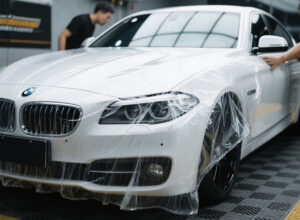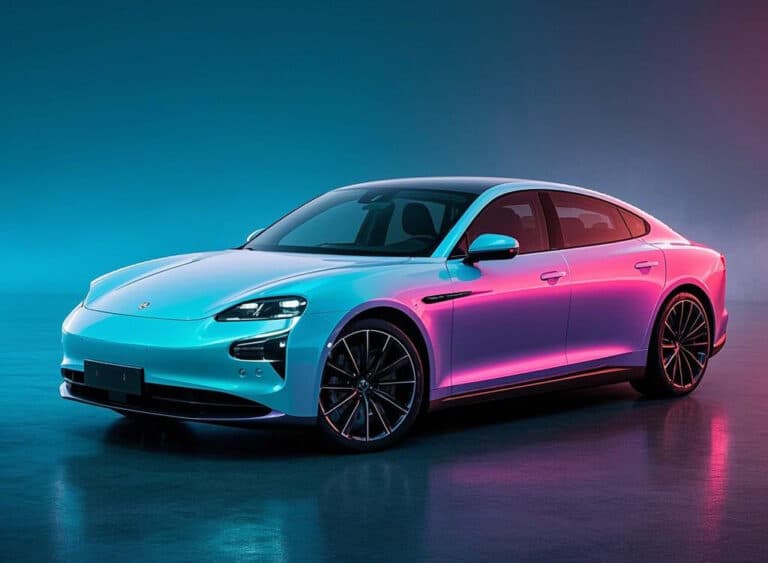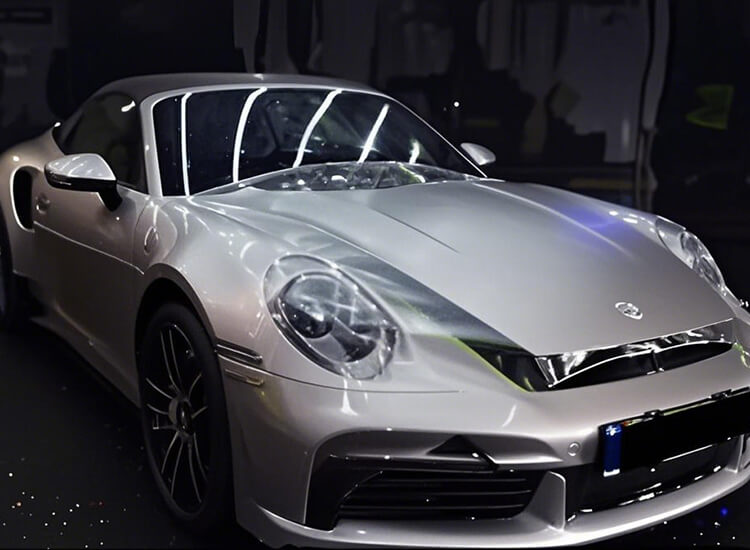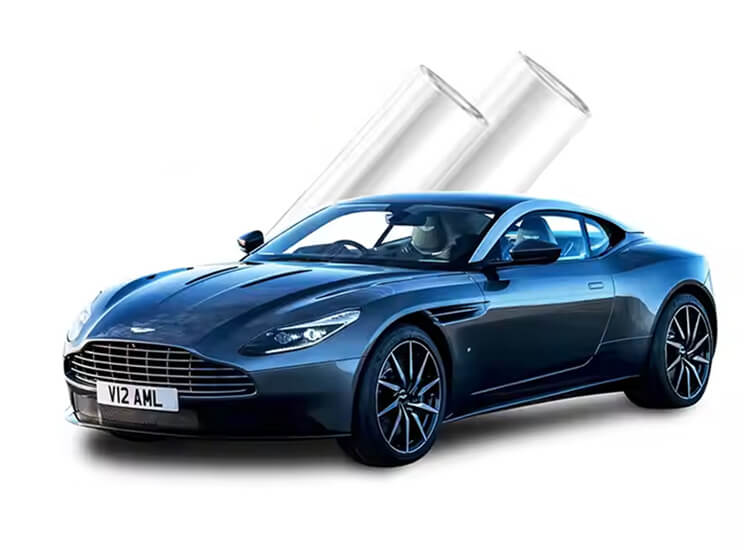What Is PPF Coating For Cars: Everything You Need to Know
If you’re a car enthusiast or simply someone who wants to protect their vehicle investment, you’ve probably heard the term PPF coating. But what exactly is it? How does it work? And why is everyone talking about it in the automotive world? In this comprehensive guide, we’ll break down everything you need to know about Paint Protection Film (PPF) coating, from its benefits to the installation process and even how long it lasts. Buckle up because by the end of this article, you’ll understand why PPF coating for cars is one of the smartest moves you can make to preserve your vehicle’s look and value.

What Is PPF Coating?
PPF coating, short for Paint Protection Film coating, is a thermoplastic urethane film applied to the exterior surfaces of a vehicle. It acts as an invisible shield against scratches, chips, stains, and environmental damage. Initially developed for military use to protect helicopter blades, this technology has now found its way to luxury, performance, and daily-driver vehicles.
Modern PPF is more advanced than ever—self-healing, stain-resistant, and almost invisible once installed. It’s the go-to solution for car owners who care about their vehicle’s long-term appearance and resale value.
Why PPF Coating Become More and More Popular in Recent Years?
The growing popularity of paint protection film coating is largely due to increasing awareness of vehicle preservation. Car paint is vulnerable to road debris, bug splatter, bird droppings, UV rays, and even careless door dings in parking lots. Repairing these damages can be expensive. PPF coating offers a near-invisible line of defense. Think of it as armor for your car’s paint. Key Advantages of PPF Coating:
Self-Healing Properties
One of the most impressive features of PPF coating is its self-healing ability. Minor scratches and swirl marks can literally disappear when exposed to heat or direct sunlight, helping your vehicle maintain a flawless appearance with minimal maintenance.
UV Protection
PPF coating provides a strong barrier against harmful UV rays, preventing oxidation and fading of your vehicle’s paint over time. This protection keeps your car looking vibrant and new, even after years under the sun.
Hydrophobic Surface
The hydrophobic (water-repelling) nature of PPF makes cleaning your car easier and faster. Water, dirt, and grime slide off the surface more effortlessly, reducing the need for frequent washes and enhancing that showroom shine.
Chemical Resistance
PPF offers robust chemical protection against everyday environmental hazards like acid rain, bird droppings, tree sap, and road salt. These contaminants can etch or stain paint, but a high-quality PPF acts as a protective barrier, keeping your finish spotless.
Impact Resistance
From loose gravel to highway debris, PPF absorbs small impacts that would normally chip or scratch your car’s paint. This level of defense is especially useful for high-impact zones like the front bumper, hood, and fenders.
4 Types of PPF Coatings On the Market
Today’s market offers a variety of PPF coating options, each tailored to different styles, performance needs, and budgets. Whether you’re aiming for a glossy showroom finish, a stealthy matte look, bold customization, or enhanced hydrophobic protection, there’s a paint protection film designed to match your goals. Here are the four most popular types of PPF coatings for cars available today(PPF Cost 2025).
Clear Gloss PPF
The most commonly chosen option, Clear Gloss PPF, delivers exceptional transparency and a high-gloss finish that enhances the car’s original paintwork. It’s ideal for those who want invisible protection without altering the vehicle’s factory look. This type of film offers excellent clarity while safeguarding against scratches, chips, and UV damage.
-
Typical Cost: $1,500 – $2,500 for front-end coverage; $4,500 – $6,000 for full-body wrap
-
Top Brands:
-
XPEL Ultimate Plus
-
3M Scotchgard Pro Series
-
SunTek Ultra
-
-
Best For: Daily drivers, luxury vehicles, showroom finishes
Matte PPF Coating
If you prefer a unique, satin or stealth appearance, Matte PPF coating is the way to go. It not only protects your car’s surface from environmental hazards but also completely transforms its aesthetic. Matte films are great for high-end vehicles or custom builds where visual style is as important as protection.
-
Typical Cost: $2,000 – $3,000 for partial; $5,000 – $7,000 for full wrap
-
Top Brands:
-
XPEL Stealth
-
Avery Dennison Supreme Defense Matte
-
Stek DYNOmatt
-
-
Best For: High-end or modified vehicles, aesthetic-focused drivers
Colored or Custom PPF
For those seeking both protection and personalization, Colored or Custom PPF offers a creative solution. These films come in various colors, finishes, and even printed patterns, allowing you to change your car’s appearance while maintaining the same level of paint protection. Perfect for making a bold statement on the road.
-
Typical Cost: $3,000 – $7,000 depending on complexity and design
-
Top Brands:
-
Stek Fashion Film Series (e.g., DYNOprism, DYNOcarbon)
-
HEXIS Bodyfence PPF Color
-
Inozetek PPF Color Wraps
-
-
Best For: Enthusiasts, show cars, branding vehicles
Ceramic-Coated PPF
Ceramic-Coated PPF merges the best of both worlds: the physical impact resistance of paint protection film and the hydrophobic, slick properties of ceramic coating. This hybrid solution provides enhanced gloss, easier cleaning, and superior resistance to water, contaminants, and stains, making it an excellent upgrade for long-term protection.
-
Typical Cost: $2,500 – $6,500 depending on vehicle size and coverage
-
Top Brands:
-
XPEL Ultimate Fusion
-
Stek DYNOshield (with built-in ceramic layer)
-
Kavaca Ceramic Infused PPF by Ceramic Pro
-
-
Best For: Premium vehicle owners, minimal maintenance, extreme climates

PPF Coating vs. Ceramic Coating: What’s the Difference?
While both are popular in the automotive detailing world, PPF coating and ceramic coating serve different purposes. Many car owners apply ceramic coating over PPF for the ultimate combo—maximum physical and chemical protection(PPF Coating vs. Ceramic Coating).
| Feature | PPF Coating | Ceramic Coating |
| Type of Protection | Physical (scratches, chips) | Chemical (UV, dirt, water) |
| Thickness | Thicker (up to 8 mils) | Thin liquid layer |
| Self-Healing Ability | Yes | No |
| Impact Resistance | High | Low |
| Longevity | 5–10 years | 2–5 years |
How Long Does PPF Coating Last?
One of the most common questions car owners ask is, “How long does PPF coating last?” The answer largely depends on several key factors, but in general, a high-quality paint protection film can last anywhere from 5 to 10 years. The lifespan of PPF coating is influenced by the quality of the film, with top-tier brands like XPEL, SunTek, and 3M leading the industry in durability and performance. However, even the best film can underperform if it’s not properly installed. Professional installation using precision-cut templates and meticulous techniques ensures the film adheres correctly and offers optimal protection.
Maintenance and care are also crucial. Regular washing with pH-neutral soaps, avoiding harsh chemicals, and steering clear of abrasive automatic car washes can significantly extend the life of the film. Lastly, environmental exposure plays a role—vehicles driven in harsh climates or on rough roads may see more wear and tear. It’s worth noting that some premium PPF products come with up to a 10-year warranty, especially when applied by certified professionals, giving you added peace of mind and long-term value.
Where Can You Apply PPF Coating?
While it’s possible to apply PPF coating to the entire vehicle for maximum protection, many car owners opt to start with high-impact areas that are most susceptible to damage. These commonly protected zones include the front bumper, hood, fenders, side mirrors, rocker panels, and the edges and handles of the doors. These areas face frequent exposure to road debris, bug splatter, and environmental wear, making them prime candidates for protective film.
For those seeking complete peace of mind, a full-body PPF application is also an option. Although it comes at a higher cost, the long-term benefits in preserving paint quality and maintaining vehicle value are unmatched. When installed by certified professionals using high-quality materials, some premium PPF films even offer warranties of up to 10 years, making them a worthwhile investment for vehicle preservation.
In addition to traditional clear films, car owners now have the option to customize their protection. Colored or custom PPF is available in various shades and patterns, allowing for a unique look while still delivering the same high level of defense. Another innovative option is ceramic-coated PPF, which combines the robust impact resistance of PPF with the slick, water-repellent surface of ceramic coating. This hybrid solution offers the best of both worlds—enhanced durability and effortless maintenance.
The PPF Installation Process
Proper installation is crucial to ensure PPF coating benefits are fully realized. Here’s a step-by-step breakdown:
Thorough Cleaning
The vehicle is washed and decontaminated to remove all dirt and oil.
Surface Preparation
Any swirl marks or scratches are polished out before applying the film.
Precision Cutting
The film is custom-cut using computer-generated templates to match your car’s dimensions.
Application
The film is installed using a slip solution and squeegee method to ensure no bubbles or debris are trapped underneath.
Curing Time
The film settles over 24–48 hours, during which the self-healing feature activates.
PPF Coating Installation Tools
If you’re planning to install PPF coating yourself or just want to understand what professionals use, it’s worth getting familiar with the tools involved in the process. PPF coating installation tools are specifically designed to ensure a clean, bubble-free, and precise application of the film.
Some of the essential tools include squeegees (in various hardness levels), slip solutions for repositioning the film, precision knives or plotters for cutting, heat guns for molding around curves, and microfiber cloths for a clean, dust-free surface. High-quality installation tools make a significant difference in the outcome—reducing wrinkles, preventing adhesive marks, and ensuring a seamless finish. Whether you’re a DIY enthusiast or working with a pro, using the right PPF coating installation tools is key to maximizing the protection and visual appeal of your vehicle’s finish.
How to Maintain Your PPF Coating
To get the most out of your paint protection film, proper care is essential. Maintenance Tips:
-
Wait at least 48 hours before washing the car after installation.
-
Use a pH-neutral car shampoo to avoid degrading the adhesive.
-
Avoid automatic car washes with brushes.
-
Hand wash regularly and use microfiber towels.
-
Apply a ceramic topper for extra slickness and water repellency.
Is PPF Coating Really Worth It?
If you’ve ever wondered, “Is PPF coating worth it?” — the answer is a strong yes, especially for drivers who value long-term protection and vehicle preservation. This is particularly true if you own a high-end or luxury vehicle, where maintaining flawless paint is crucial for both appearance and value.
If resale value matters to you, PPF coating becomes an even smarter investment, helping to keep your car looking like new and commanding top dollar when it’s time to sell or trade in. It’s also ideal for anyone who wants to avoid the hassle and expense of frequent touch-up paint jobs. For those who often drive in harsh conditions—like highways littered with rock chips, gravel roads, or salted winter streets—the added layer of defense from paint protection film can make a huge difference.
While the initial PPF coating cost may seem steep—ranging from around $500 for partial coverage to $6,000 or more for a full-body wrap—the long-term payoff in reduced paint repair costs and enhanced vehicle value makes it well worth the investment.
Final Words
PPF coating is more than just a protective film—it’s a smart investment for anyone serious about car care. It combines cutting-edge materials with practical benefits to shield your vehicle against the elements and daily wear. Whether you opt for partial or full coverage, you’ll enjoy peace of mind knowing your car’s paint is protected by one of the best solutions available today.
By understanding what paint protection film coating is, how it works, and how to care for it, you’re already ahead of the curve in the automotive world. Now, it’s time to give your car the protection it deserves.






